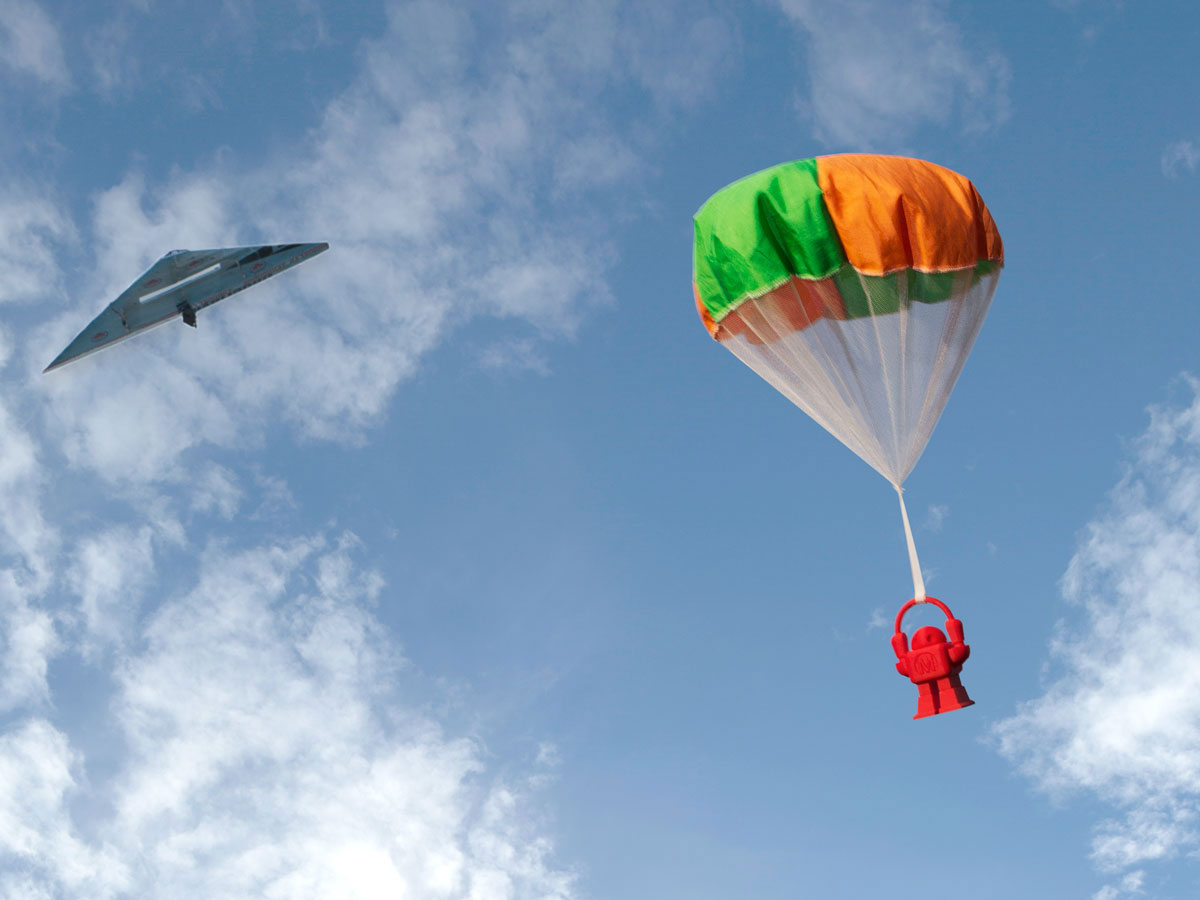This project first appeared in MAKE Volume 38, on page 84.
I’ve always been fascinated by things that fly. When I was 10, my dad and I hand-built a 2-meter R/C glider, with each wing spar painstakingly glued in place and carefully covered with heat-shrink wrap. With our first test launch, all the hard work was gone instantly, as the plane dove into the ground, splintering into hundreds of pieces … another lesson in flight and gravity. But for some reason, I never gave up.
When Breck Baldwin showed how to build the “Towel” R/C Flying Wing in MAKE Volume 30, I was bitten by the flying bug again. Breck and I struck up a friendship at Maker Faire in California and later, we met up in his Brooklyn studio with my kids for a build session. Since then, I’ve finally mastered radio-controlled fixed-wing flight, and the Towel, now known as the Flack (flying + hack), has been an absolute blast to fly.
In MAKE Volume 31, I showed how to build a small but super fun balsa wood folding-wing glider that’s rocketed into the air using a handheld rubber band catapult. Wind resistance holds the wings back until plane reaches its apex, where the wings pop open for a long and gentle glide down. You can build your own or buy the kit (Maker Shed item #MKRS2).
Since then, I’ve been thinking how cool it would be to combine these two projects. With a drop mechanism, the glider or other flying object could be carried really high in the air and then released from the bottom of the powered plane!
As often happens, ideas led to prototyping, testing, and finally a finished product. In a large park, the ultimate test involved carrying the glider under the R/C plane up to about 200 feet. With a flip of a switch on my transmitter, the servo mechanism released the glider, the wings popped out beautifully, and the glider began its gradual descent. It works!
The drop mechanism is mounted to aluminum “angle iron” that’s attached to the bottom of the R/C plane with velcro. (Because the flying wing lacks landing gear, this allows the drop mechanism to be harmlessly “torn” off when the plane lands.) Attached to the angle iron is a servomotor with a lengthened servo arm. The servo is then connected into the R/C receiver, to a channel that typically controls retractable landing gear, so it moves its full range with the flip of a switch.
This mechanism can easily be modified for different airplanes and quadcopters to drop different types of things. We recently tested it with a small foam “delta dart” glider, with kids chasing after it crazily as it floated to the ground from 100 feet up, and we lost a plastic paratrooper on the roof of a school after a 3-minute hang-time drop.
If you’re dropping gliders, a spotter is definitely needed because once you release the glider, you need to keep flying the plane! My son is a great spotter and once I get the R/C plane on the ground within 30 seconds or so, I’m able to enjoy the flight of the glider. (My next project is adding an autopilot so the plane can go into “loiter mode” while the glider is recovered.) I hope you have as much fun building this simple little project as I’ve had developing it.



